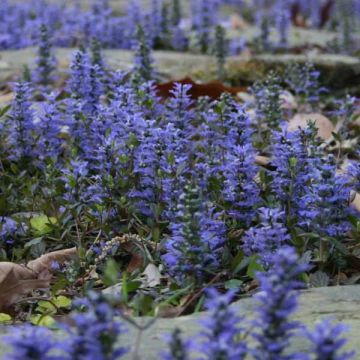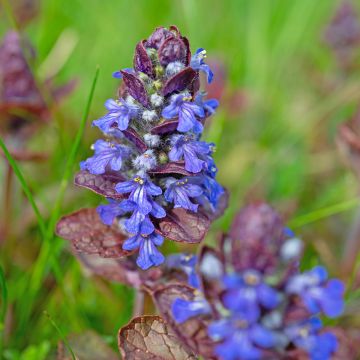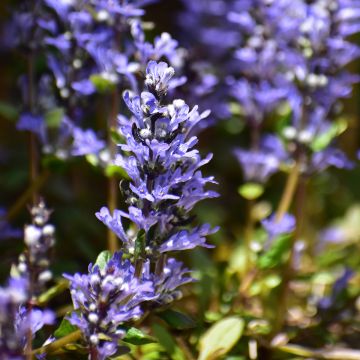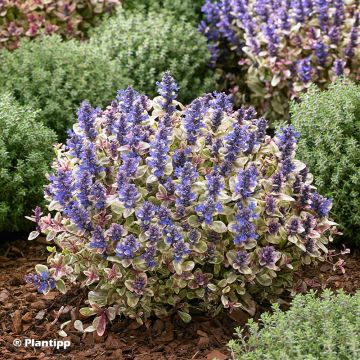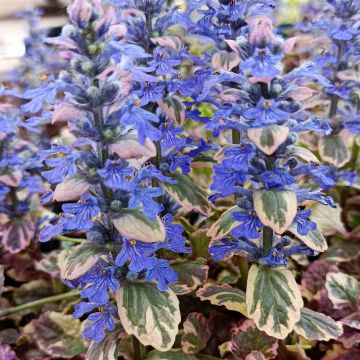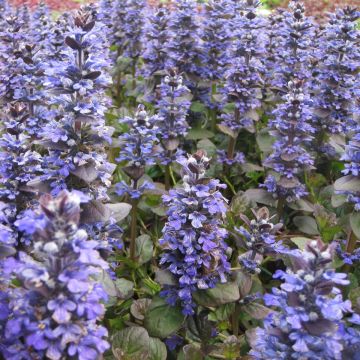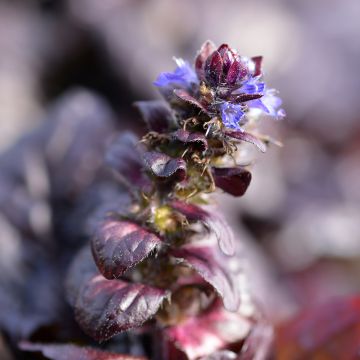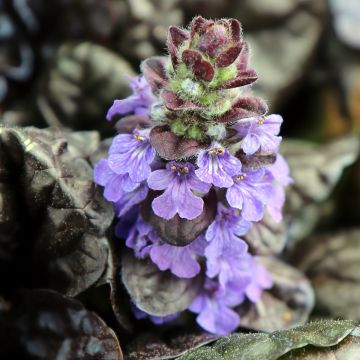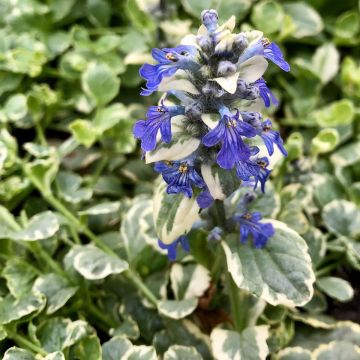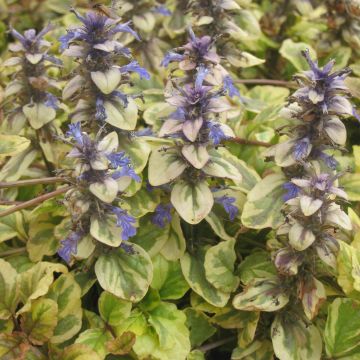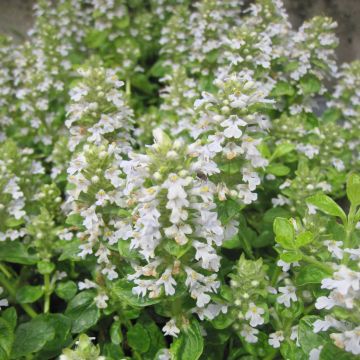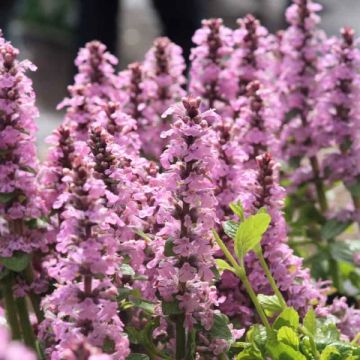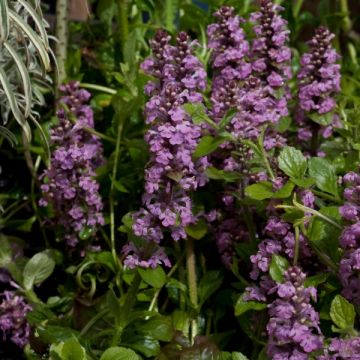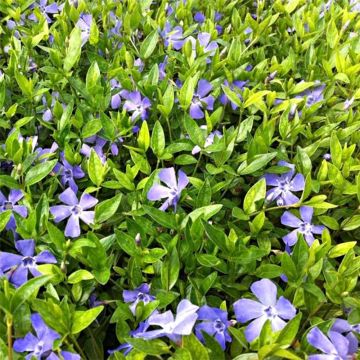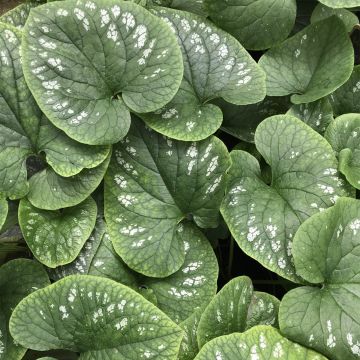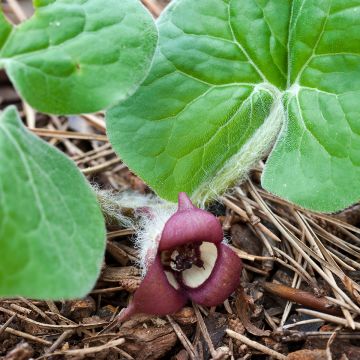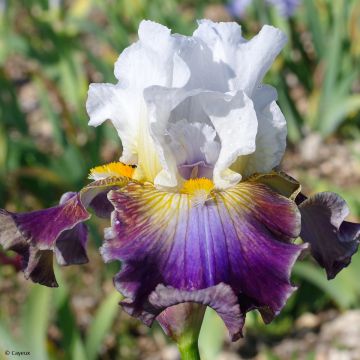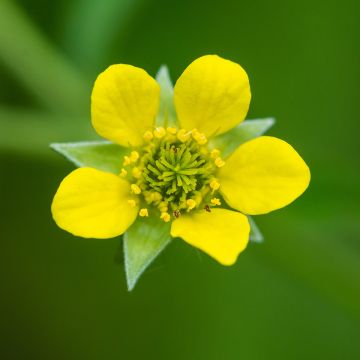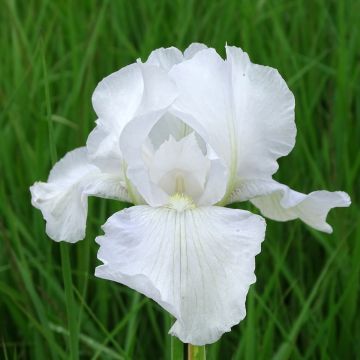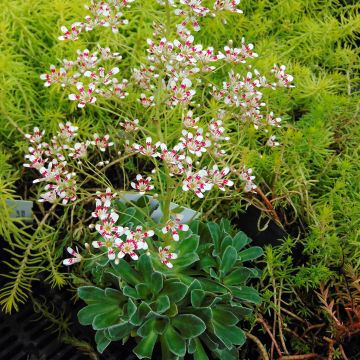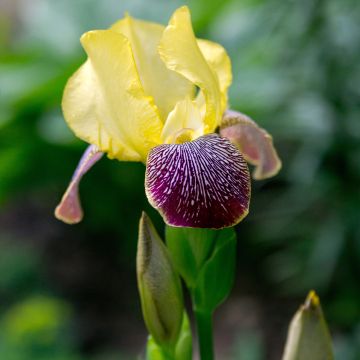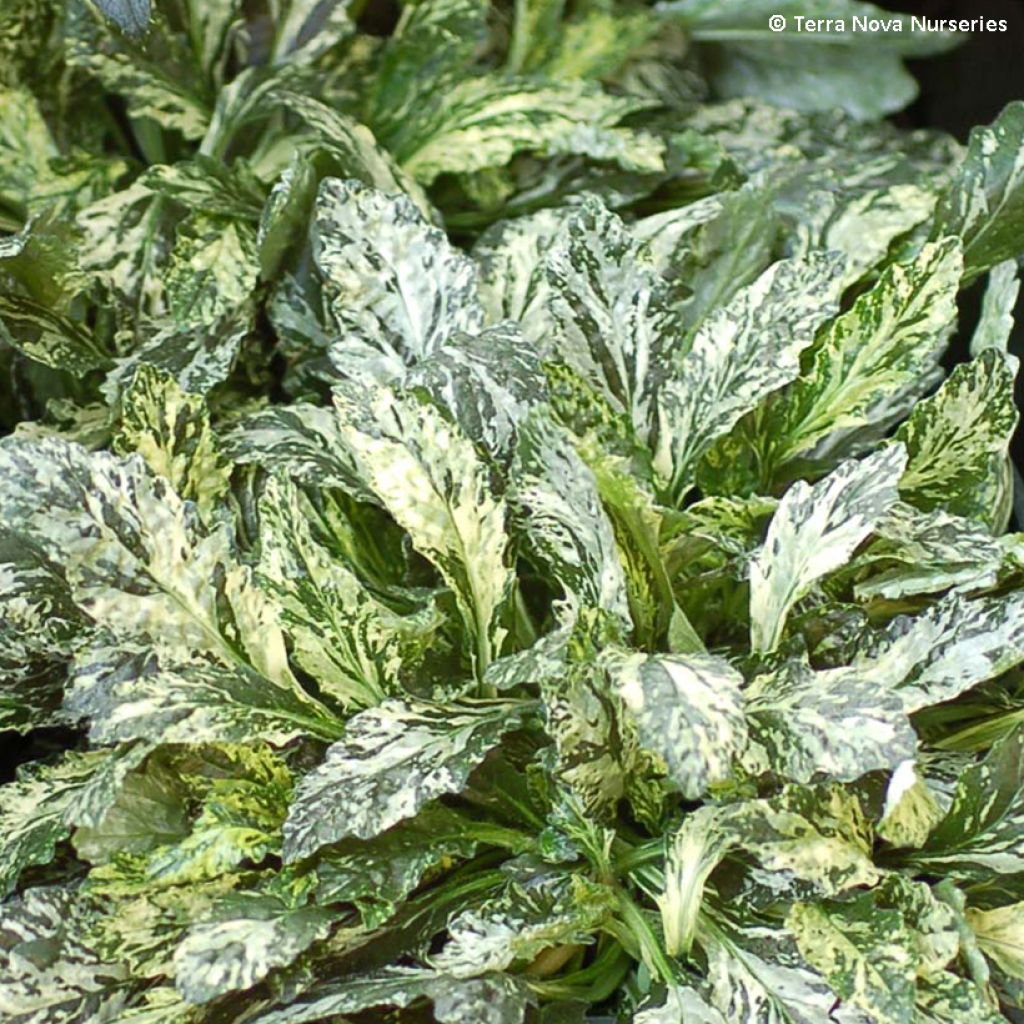

Ajuga reptans Sparkler
Ajuga reptans Sparkler
Ajuga reptans Sparkler
Bugle, Carpet bugle, Carpenter's herb, Creeping Bugle
Why not try an alternative variety in stock?
View all →This plant carries a 12 months recovery warranty
More information
We guarantee the quality of our plants for a full growing cycle, and will replace at our expense any plant that fails to recover under normal climatic and planting conditions.
From €5.90 for pickup delivery and €6.90 for home delivery
Express home delivery from €8.90.
From €5.90 for pickup delivery and €6.90 for home delivery
Express home delivery from €8.90.
Does this plant fit my garden?
Set up your Plantfit profile →
Description
Ajuga reptans Sparkler is a variety of creeping bugle with variegated foliage, striped or splashed with cream-white on a dark green background, ideal for brightening up a border. The new shoots are particularly variegated, and hot weather also accentuates this effect. In winter, the variegated foliage takes on astonishing pink tones. This vigorous perennial groundcover with great ornamental value forms a dense carpet of foliage, invaded in early summer by spikes of deep blue flowers. If already present in a rockery or border, this evergreen plant is also very beautiful when overflowing from pots. Like all bugles, this one appreciates soils that remain moist in summer.
Ajuga reptans is a perennial plant of the mint family, widespread in Europe, especially in its central and boreal regions. It is also found in western Asia and Algeria. With rapid growth, the creeping bugle Sparkler is a variety that is compact and vigorous, rooting itself thanks to its stolons and eventually forming a carpet of 10 to 15 cm (4 to 6in) in height, theoretically spreading forever. It develops rosettes of evergreen, ribbed, and veined leaves. The foliage of this variety is splashed with cream-white specks on a dark green background. From June onwards, fragrant spikes of deep violet-blue flowers bloom above the foliage. This highly decorative flowering lasts for over a month.
Ajuga reptans Sparkler is an exuberant plant that will take up the space you give it. If it tends to escape the boundaries set for it, its growth is easily controlled by removing the wandering stolons. Bugles are among the best groundcover plants; perfect for dressing the base of trees and bushes, in pots or shaded beds. They can be paired with spring bulbs, Lamiums with colourful foliage, or fairy flowers (Epimedium). They are also good companions for hostas and shade-loving perennial geraniums. In a cool rockery, they can be planted next to Acaena 'Blue Haze' or buchananii, Azorella trifurcata 'Nana', lady's mantle, and saxifrages.
Report an error about the product description
Flowering
Foliage
Plant habit
Botanical data
Ajuga
reptans
Sparkler
Lamiaceae
Bugle, Carpet bugle, Carpenter's herb, Creeping Bugle
Cultivar or hybrid
Other Ajuga
Planting and care
Undemanding on the nature of the soil, this plant does not tolerate prolonged drought well, but can tolerate limestone very well. What bugles prefer is partial shade or sun in a moist soil, which is rich in humus, even clay. Ajuga reptans can be planted all year round. It is very easy to cultivate and tolerates all types of soil, from the poorest to the richest. Beware of slugs in spring! They can cause havoc on young plants.
Planting period
Intended location
Care
This item has not been reviewed yet - be the first to leave a review about it.
Spring flowering perennials
Haven't found what you were looking for?
Hardiness is the lowest winter temperature a plant can endure without suffering serious damage or even dying. However, hardiness is affected by location (a sheltered area, such as a patio), protection (winter cover) and soil type (hardiness is improved by well-drained soil).

Photo Sharing Terms & Conditions
In order to encourage gardeners to interact and share their experiences, Promesse de fleurs offers various media enabling content to be uploaded onto its Site - in particular via the ‘Photo sharing’ module.
The User agrees to refrain from:
- Posting any content that is illegal, prejudicial, insulting, racist, inciteful to hatred, revisionist, contrary to public decency, that infringes on privacy or on the privacy rights of third parties, in particular the publicity rights of persons and goods, intellectual property rights, or the right to privacy.
- Submitting content on behalf of a third party;
- Impersonate the identity of a third party and/or publish any personal information about a third party;
In general, the User undertakes to refrain from any unethical behaviour.
All Content (in particular text, comments, files, images, photos, videos, creative works, etc.), which may be subject to property or intellectual property rights, image or other private rights, shall remain the property of the User, subject to the limited rights granted by the terms of the licence granted by Promesse de fleurs as stated below. Users are at liberty to publish or not to publish such Content on the Site, notably via the ‘Photo Sharing’ facility, and accept that this Content shall be made public and freely accessible, notably on the Internet.
Users further acknowledge, undertake to have ,and guarantee that they hold all necessary rights and permissions to publish such material on the Site, in particular with regard to the legislation in force pertaining to any privacy, property, intellectual property, image, or contractual rights, or rights of any other nature. By publishing such Content on the Site, Users acknowledge accepting full liability as publishers of the Content within the meaning of the law, and grant Promesse de fleurs, free of charge, an inclusive, worldwide licence for the said Content for the entire duration of its publication, including all reproduction, representation, up/downloading, displaying, performing, transmission, and storage rights.
Users also grant permission for their name to be linked to the Content and accept that this link may not always be made available.
By engaging in posting material, Users consent to their Content becoming automatically accessible on the Internet, in particular on other sites and/or blogs and/or web pages of the Promesse de fleurs site, including in particular social pages and the Promesse de fleurs catalogue.
Users may secure the removal of entrusted content free of charge by issuing a simple request via our contact form.
The flowering period indicated on our website applies to countries and regions located in USDA zone 8 (France, the United Kingdom, Ireland, the Netherlands, etc.)
It will vary according to where you live:
- In zones 9 to 10 (Italy, Spain, Greece, etc.), flowering will occur about 2 to 4 weeks earlier.
- In zones 6 to 7 (Germany, Poland, Slovenia, and lower mountainous regions), flowering will be delayed by 2 to 3 weeks.
- In zone 5 (Central Europe, Scandinavia), blooming will be delayed by 3 to 5 weeks.
In temperate climates, pruning of spring-flowering shrubs (forsythia, spireas, etc.) should be done just after flowering.
Pruning of summer-flowering shrubs (Indian Lilac, Perovskia, etc.) can be done in winter or spring.
In cold regions as well as with frost-sensitive plants, avoid pruning too early when severe frosts may still occur.
The planting period indicated on our website applies to countries and regions located in USDA zone 8 (France, United Kingdom, Ireland, Netherlands).
It will vary according to where you live:
- In Mediterranean zones (Marseille, Madrid, Milan, etc.), autumn and winter are the best planting periods.
- In continental zones (Strasbourg, Munich, Vienna, etc.), delay planting by 2 to 3 weeks in spring and bring it forward by 2 to 4 weeks in autumn.
- In mountainous regions (the Alps, Pyrenees, Carpathians, etc.), it is best to plant in late spring (May-June) or late summer (August-September).
The harvesting period indicated on our website applies to countries and regions in USDA zone 8 (France, England, Ireland, the Netherlands).
In colder areas (Scandinavia, Poland, Austria...) fruit and vegetable harvests are likely to be delayed by 3-4 weeks.
In warmer areas (Italy, Spain, Greece, etc.), harvesting will probably take place earlier, depending on weather conditions.
The sowing periods indicated on our website apply to countries and regions within USDA Zone 8 (France, UK, Ireland, Netherlands).
In colder areas (Scandinavia, Poland, Austria...), delay any outdoor sowing by 3-4 weeks, or sow under glass.
In warmer climes (Italy, Spain, Greece, etc.), bring outdoor sowing forward by a few weeks.

































